Resources Section 5: Conclusions
Section 5: Conclusion
This Open Online Course has provided an introduction to the topic of “environment and health”. Now that you’ve completed it, you should have a clearer understanding of what is meant by “environment”, how it can impact health and what we can do to mitigate environmental risks. Please note that this course has not provided an exhaustive list of environmental hazards. Other environmental hazards; such as energy production, climate change, noise, food system, radiations; also have significant implications for health.
If you want further knowledge on climate change and its impact on health, you can follow Peoples-uni Open Online Course Climate Change and Public Health.
5.1 Burden of diseases due to environmental risks
Environmental risks account for a large proportion of the global burden of disease, with 23% of all deaths linked to the environment, corresponding to more than 12 million deaths every year! This burden is not shared equally between countries: low- and middle-income countries bear the greatest share of deaths due to environmental hazards.
5.2 Health Inequalities
As it was said in section 5.1, huge inequalities exist between countries in terms of environmental risks. Similarly, huge inequalities towards environmental risks exist within countries: the risks vary a lot between sub-groups of population in the same country. In general, women, children and people from the most deprived backgrounds are more vulnerable to environmental risks.
5.2.1 Environmental Injustice
Environmental injustice occurs when the marginalized communities are subjected to higher levels of environmental risks as compared to the other groups. For instance, many lower-income and minority communities may reside in areas located near industrial plants or waste disposal sites, leading them to suffer from health problems. This video from the Women's Environment and Development Organization explains the term "environmental injustice."
As an example of environmental injustice, indigenous communities in both Canada and United States experience higher levels of environmental burden and health risks as compared to their Caucasian counterparts. Many corporations release harmful contaminants on tribal lands, leading to negative environmental, health, and spiritual impacts among the Native communities. This website from Colorado College will allow readers to have a greater understanding of the environmental injustice endured by the Najavo Indian groups.
5.2.2 Environmental Justice Movement
The environmental justice movement consists of formal and informal networks of community, national, and international organizations to address severe environmental degradation in different parts of the world. There have been successful examples of the environmental justice movement in demanding marginalized individuals to live in peace and dignity within their natural surroundings. Watch this video from the UN Climate Change to listen to Kathy Jetnil-Kijiner’s concern about climate change in the Marshall Islands.
5.3 Shift toward non-communicable diseases
Please remember that deaths and diseases due to environmental hazards are not only from communicable (infectious) causes. We recently witnessed a shift to non-communicable diseases (due to the decline of infectious disease rates and to the reduction in the environmental risks causing infectious diseases). Non-communicable diseases (cardio-vascular diseases, injuries, cancers…) now represent a large part of environmental impact on health.
5.4 Tackling environmental issues
Different strategies can be used to tackle environmental risks. Policies must encourage sustainable development if we want to ensure safe living conditions for the future generations, and collaboration between different sectors will be essential (i.e., between the health sector, industry, agriculture, urban planning…). Environmental issues are central to the sustainable development goals (SDGs). The main challenge that we are facing now is to make the right decisions in order to achieve the SDGs targets by 2030.
Here is a reminder of the 17 SDGs:
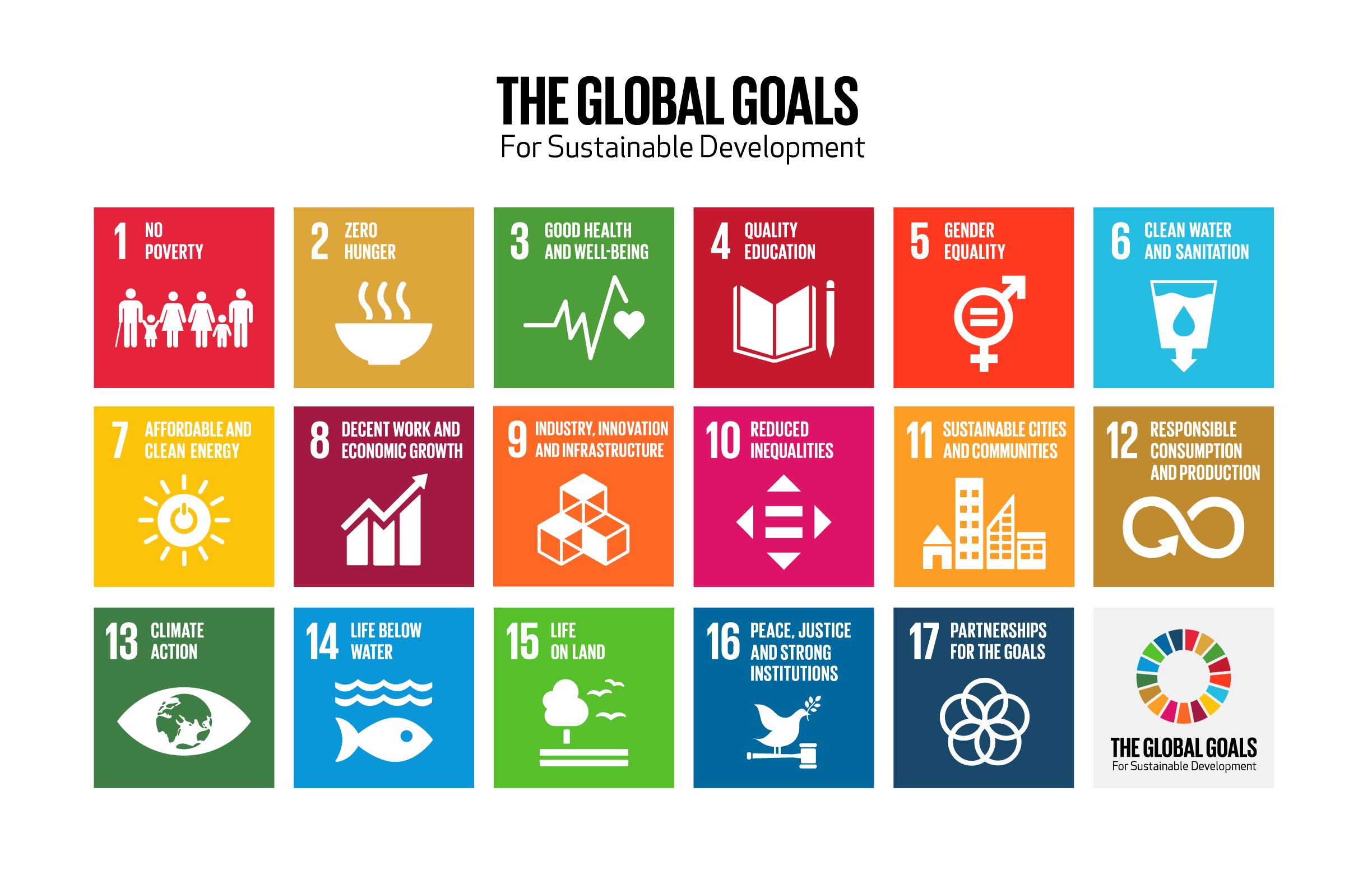
Source: https://www.globalgoals.org/resources
Tackling environmental issues could be part of achieving most of these 17 SDGs.
As an example of strategy to tackle environmental degradation and to improve the health of a population, this video highlights the work and accomplishments of the UN Environment Programme in Asia and the Pacific.
As an example of strategy to mitigate the impact of climate change, have a look at this video
5.5 Planetary health
As a conclusion, we would like to introduce the notion of planetary health. The planetary health alliance defines planetary health as “a field focused on characterizing the human health impacts of human-caused disruptions of Earth's natural systems.”
Our environment is changing rapidly (climate change, new pollutants, loss of biodiversity…), and a part of these changes are the consequences of human activities. There have always been variations in climate and environment on Earth, but it is the first time that the planet is experience such rapid changes and the first time that human activities are driving these changes. Scientist even mentioned that we entered in a new era, the Anthropocene. According to the planetary health alliance, “We are now in a new geological era, the Anthropocene, characterized by humanity’s dramatic impact on Earth’s natural systems”.
5.6 Key notions
Please have a second look at the five WHO infographics provided in the introduction. They provide the key notions about environment and health, and you probably have a better understanding of these points now that you’ve completed this course.
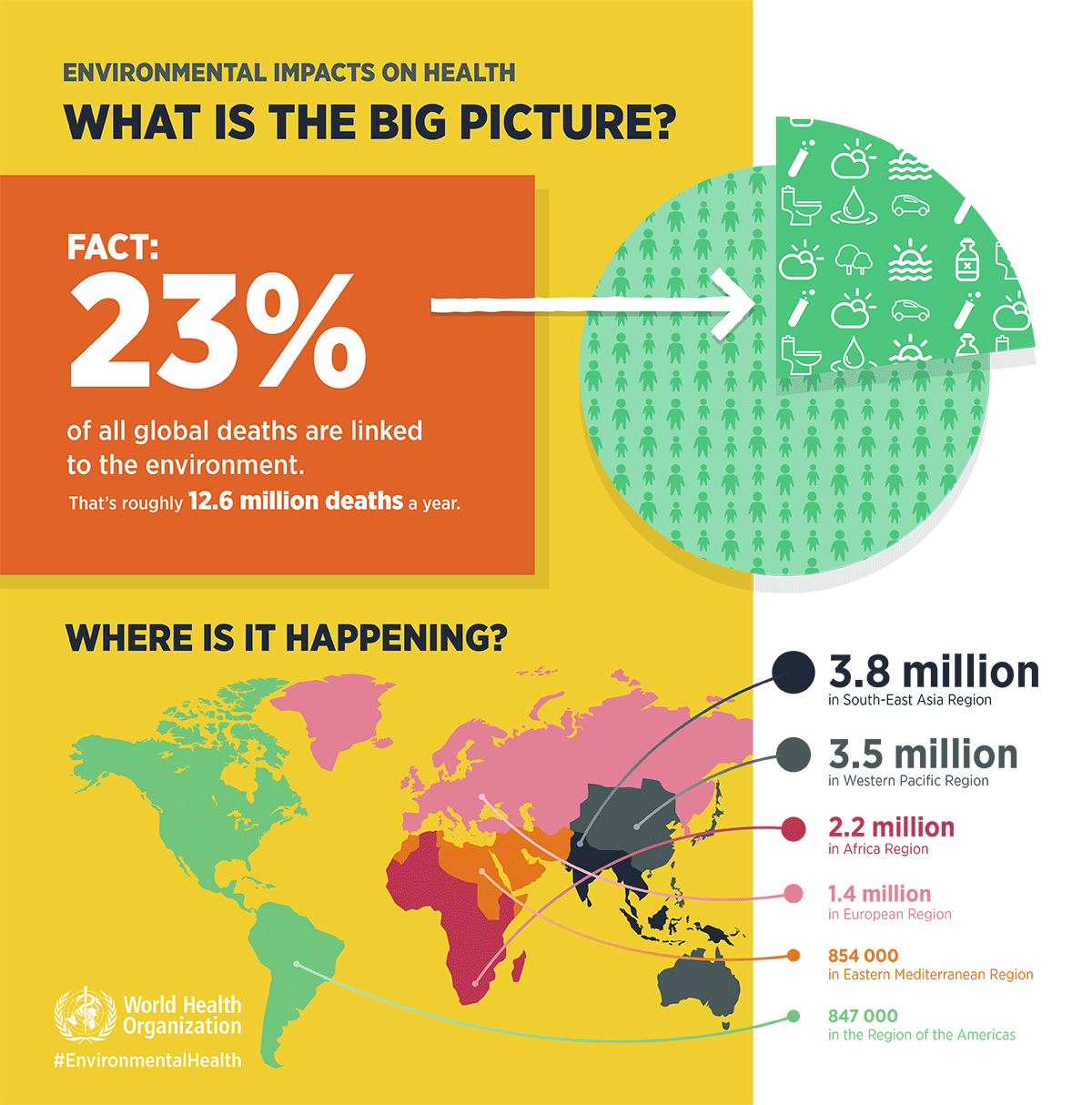

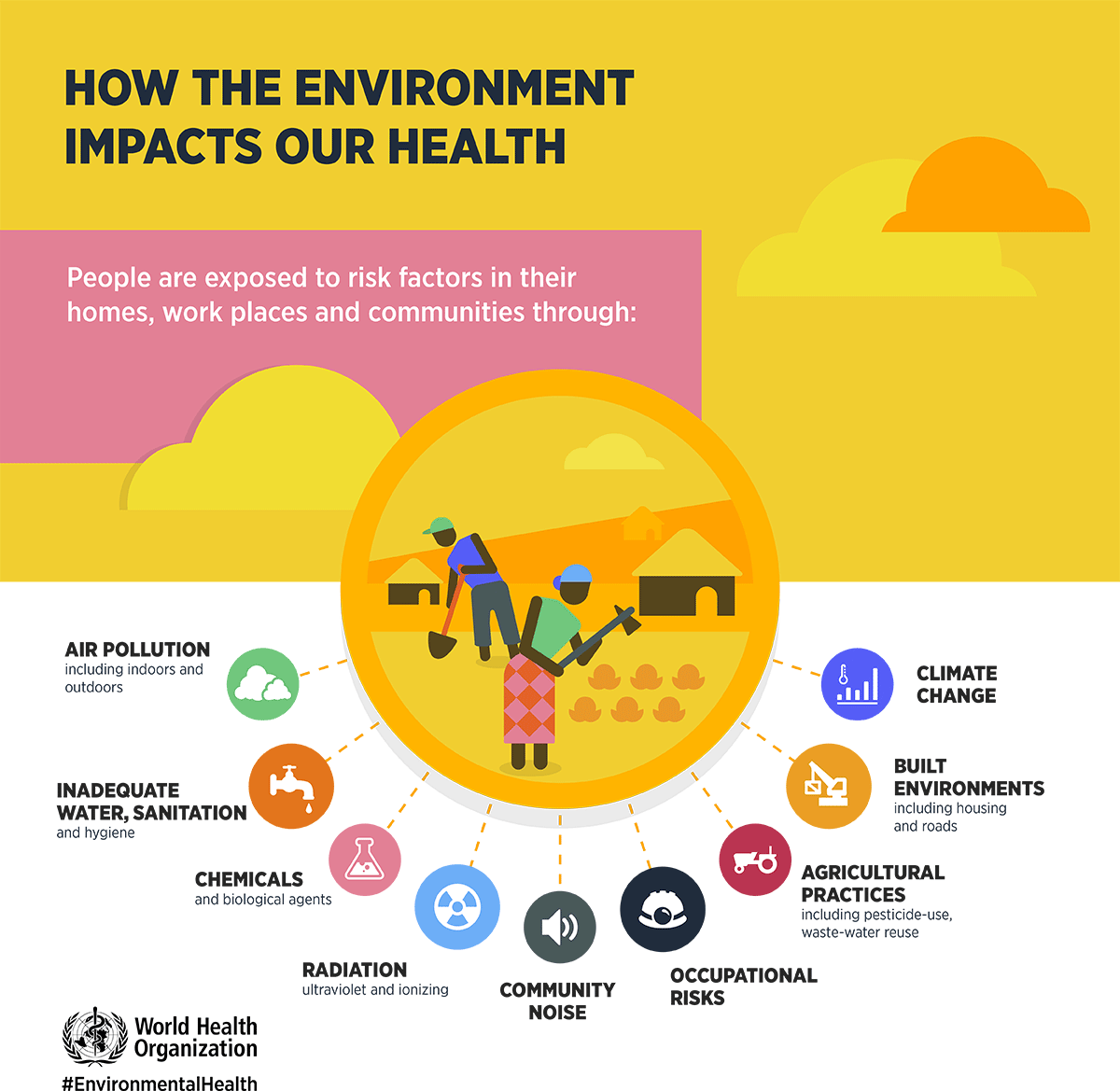
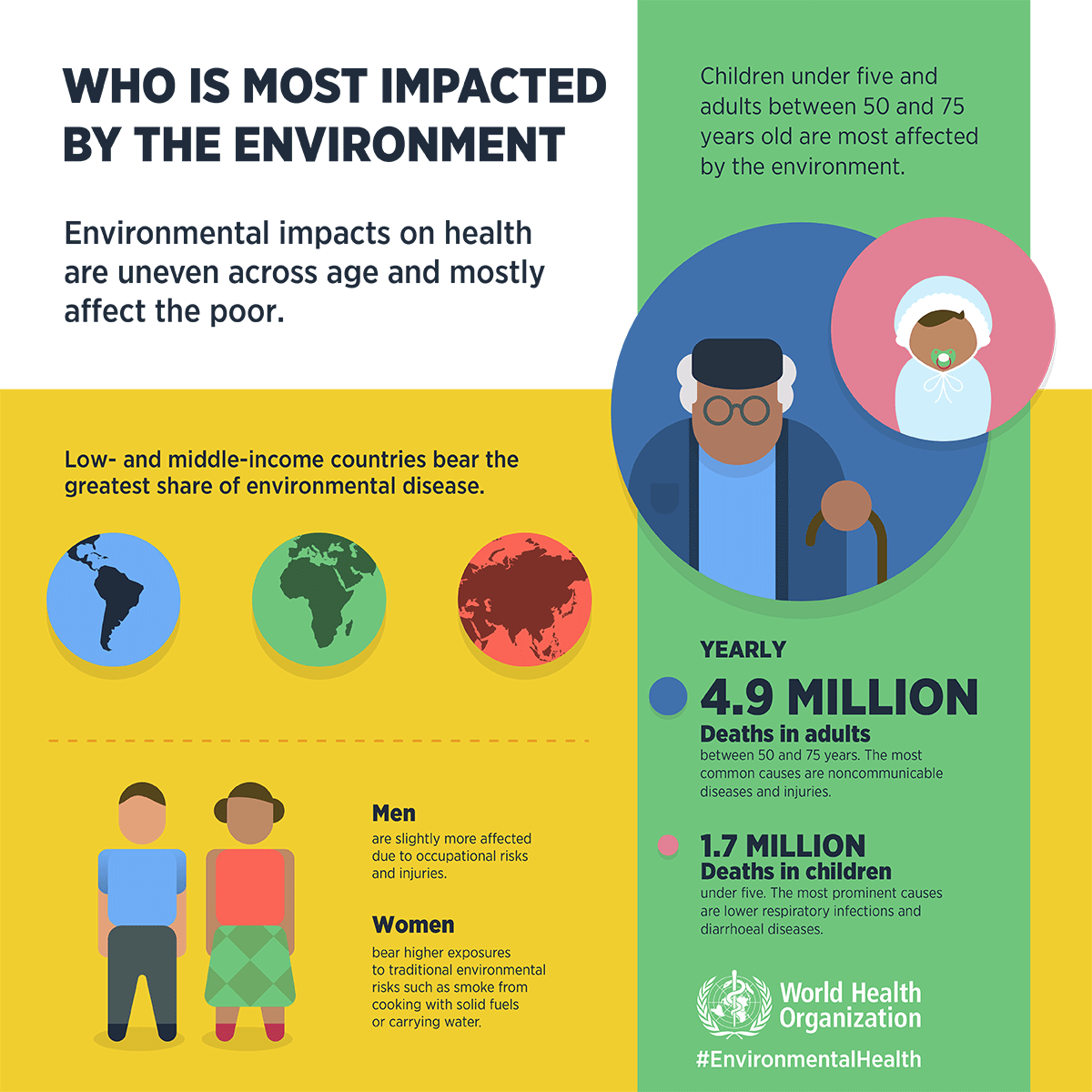
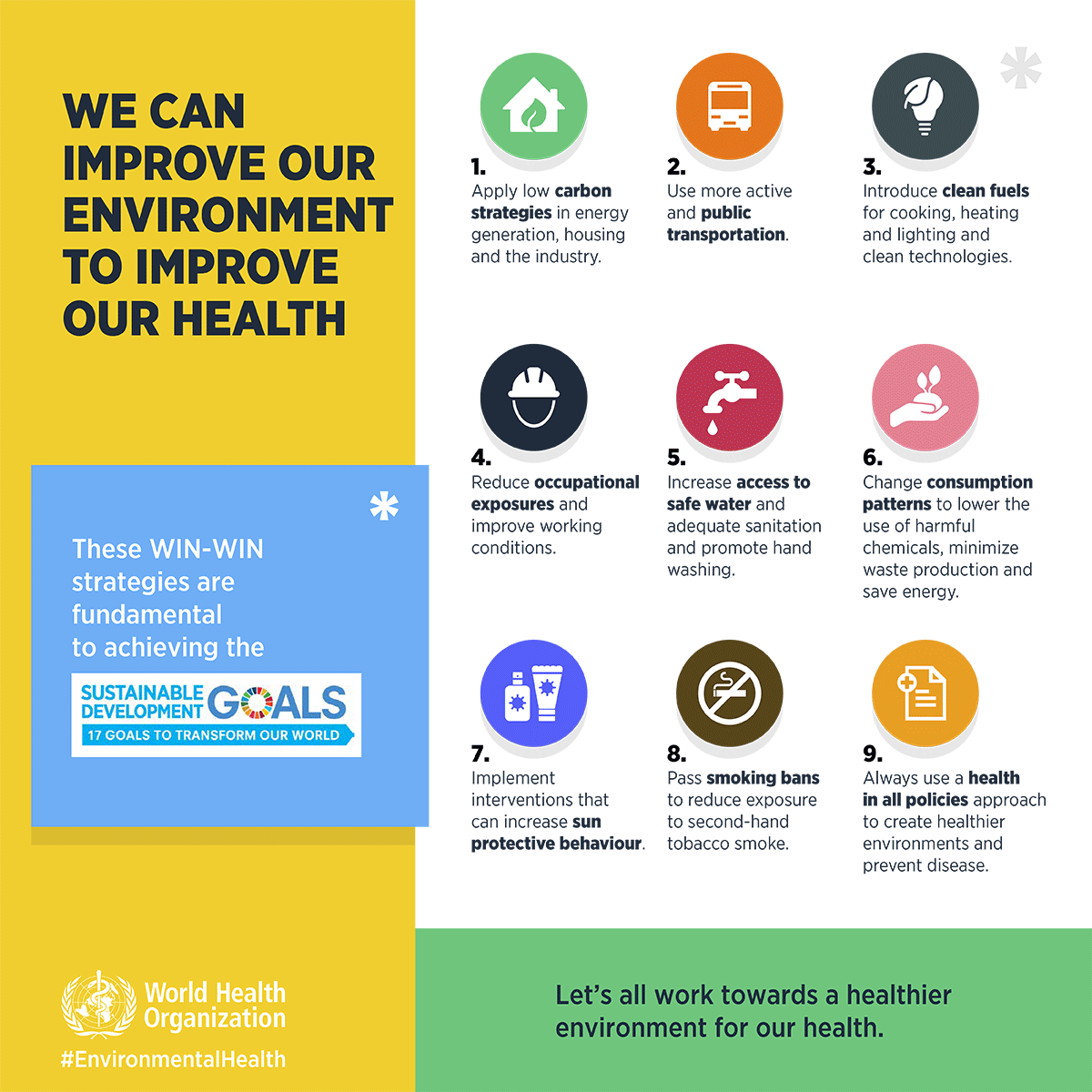
The figures above are reprinted from PHE Infographics: Environmental impacts on health. Accessed June 10th, 2020.
